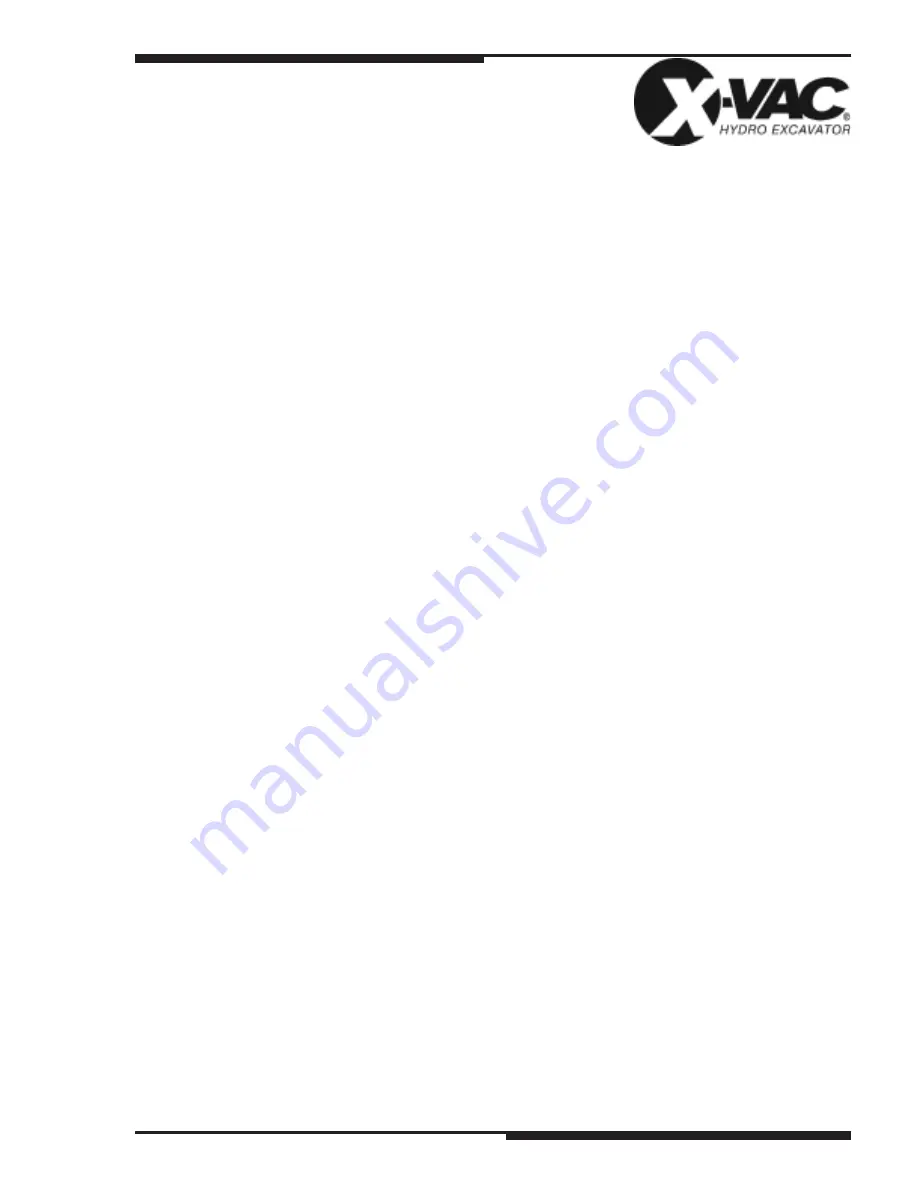
PRINCIPLES OF OPERATION 18
AQUATECH OPERATIONS, SERVICE AND PARTS MANUAL
A Product of Hi-Vac Corporation
PRINCIPLES OF OPERATION
VACUUMING AT WORK SITE:
1. Be sure that the unit operator is completely familiar with the wireless remote.
2. Place a sufficient number of intake and/or extension tubes on the boom hose to reach the
desired working depth.
3. Engage exhauster. To increase the exhauster speed, increase engine RPM to working
speed, not to exceed maximum RPM and gear as noted on the dashboard and truck
labeling.
4. Begin vacuuming debris and water. The vacuum tube can be positioned by use of the boom
up/down control, and by physically moving the tube around inside the hole to reach all areas
where debris has collected.
5. When vacuuming, the intake tube may be positioned just above the water level in the hole
allowing a mixture of air, water, and debris to enter. When required, the unit is capable of
removing debris from below water level with the intake tube completely submerged.
6. If during the vacuuming process, the debris tank becomes full, the ball check valve will close
which is indicated by loss of vacuum at the intake tube. The vacuum breaker will also
“whistle.” When the debris tank is full, follow the instructions for disengaging the exhauster
PTO.
Caution!
To avoid overloading of the truck chassis, the debris tank and the water tanks must never
be simultaneously loaded to full capacity. When traveling to the dump site with a fully loaded
debris tank, a maximum of 1/4 tank of fresh water should be carried. This is sufficient to wash
down the debris tank.
Do not operate the unit for long periods of time when the debris tank is full. It is extremely
important to always remove as much water as possible from the debris tank before driving the
vehicle. This will help eliminate overloaded conditions.
7. Excess water may be removed from the debris tank by opening the drain valve at the rear of
the unit and allow the water to drain. Ensure the exhauster is not engaged.
















































